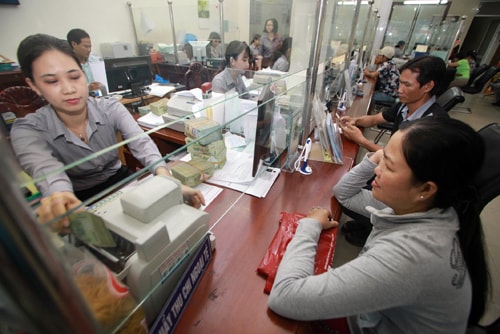Reduce loan interest rates to support businesses
At the State Bank of Vietnam (SBV) press conference on monetary policy management orientation for the last months of the year held on the afternoon of August 11, Ms. Nguyen Thi Hong, Deputy Governor of SBV, said that the management agency will strive to reduce lending interest rates to support businesses.
Interest rates are relatively stable.
Mr. Nguyen Duc Long, Deputy Director of the Monetary Policy Department (SBV), said: To implement the policy of reducing interest rates and removing difficulties for businesses, since the end of May 2016, the SBV has required credit institutions (CIs) to balance between mobilized capital and capital use, reduce operating costs, and improve business efficiency to create conditions for reducing lending interest rates. The SBV has also issued a circular amending regulations on safety ratio limits in the operations of CIs, in which the ratio of short-term capital sources for medium and long-term loans is adjusted to gradually decrease according to the roadmap to limit liquidity risks, which has contributed to supporting the reduction of interest rate pressure for CIs from now until the end of the year.
Customers transact at the bank. Photo: Tran Viet/VNA |
Therefore, according to Mr. Long, up to now, the lending interest rate of credit institutions has been relatively stable. Since the end of April 2016, state-owned commercial banks (CBs) and some joint-stock commercial banks have reduced short-term lending interest rates by 0.5%/year and brought the medium and long-term lending interest rates to a maximum of 10%/year for customers borrowing capital for production and business purposes.
“This is an effort of the banking industry because since the beginning of the year, many economic experts as well as the State Bank have predicted that inflation will increase again, so stabilizing interest rates is an extremely difficult task. Meanwhile, at the beginning of the year, some banks even increased deposit interest rates due to concerns about having to implement Circular 36 with new regulations on limits and safety ratios in the operations of credit institutions and foreign bank branches. After that, the State Bank issued amendments to Circular 36 to help relieve psychological pressure on interest rates,” Deputy Governor Nguyen Thi Hong assessed.
To implement the Government's policy of continuing to remove difficulties for businesses and striving to reduce lending interest rates, the State Bank has also had appropriate money supply and withdrawal policies to ensure liquidity at a reasonable level. In the interbank market, interest rates are also regulated at an appropriate level to prevent banks from pushing interest rates up.
According to the State Bank of Vietnam's report, the current common VND lending interest rate for priority sectors is 6 - 7%/year for short term. State-owned commercial banks apply common medium and long term lending interest rates for priority sectors at 9 - 10%/year. Lending interest rates for normal production and business sectors are at 6.8 - 9%/year for short term; 9.3 - 11%/year for medium and long term. For good customers with healthy and transparent financial situation, short term lending interest rates are from 5 - 6%/year. USD lending interest rates are commonly at 2.8 - 6.2%/year; in which short term lending interest rates are commonly at 2.8 - 5.2%/year, medium and long term lending interest rates are at 5.1 - 6.2%/year.
However, some opinions say that with the above lending interest rate framework, businesses still face difficulties in doing business due to fluctuating and increasing input costs and decreasing profit margins. Therefore, the business community still expects lending interest rates to decrease further from now until the end of the year.
Bad debt reduced to 2.58%
The State Bank of Vietnam said that by the end of June 2016, the bad debt ratio of the whole system was 2.58%, down from 2.78% in May 2016. According to data reported by the Vietnam Asset Management Company (VAMC), the total bad debts handled in the first 6 months of the year reached 59.71 trillion VND, down 14.55% compared to the same period last year. Of which, debt sold to VAMC reached 8.88 trillion VND, customers paid 30.98 trillion VND, and risk reserves used to handle bad debts reached 7.24 trillion VND.
However, Mr. Doan Van Thang, Deputy General Director of VAMC, affirmed that the biggest obstacle in VAMC's bad debt handling at present lies in the bad debt trading market. According to regulations, the sale of bad debts by state-owned enterprises is only carried out to units with the function of trading bad debts. This is a limitation for VAMC.
Mr. Thang explained that currently, the main debt trading activities in the market are VAMC, Vietnam Debt Trading Company (DATC) and about 28 asset management companies (AMCs) of commercial banks. However, the AMCs of credit institutions still have many limitations in their operations. Thus, the main bad debt trading activities in the market are VAMC and DATC.
“The Government has just issued Decree 69/2016/ND-CP regulating the conditions for debt trading services. Hopefully, when this Decree comes into effect, businesses with bad debt trading functions will develop,” said Mr. Doan Van Thang.
According to Minh Phuong/baotintuc

